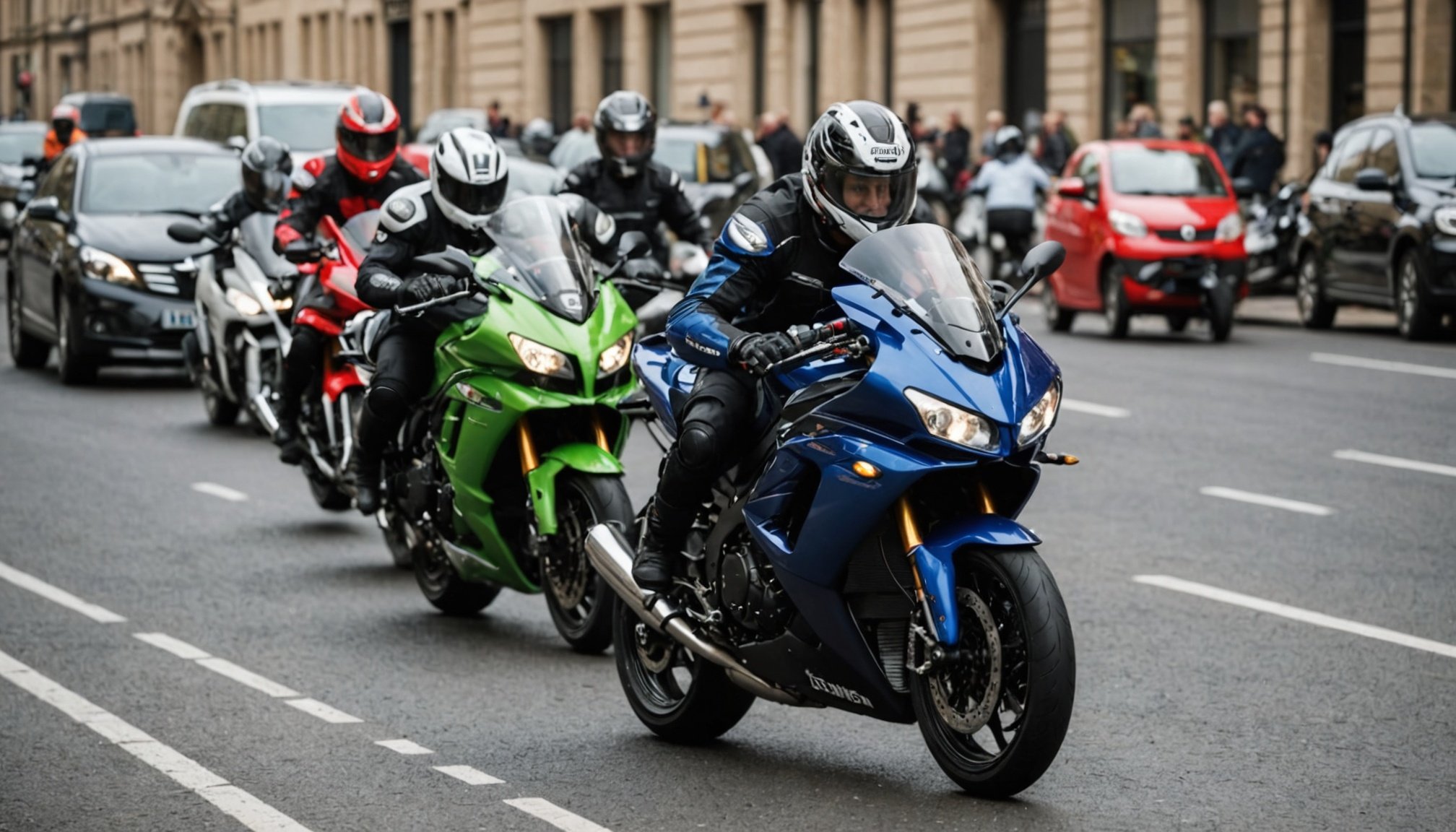Preventing Sport Bike Overheating During UK Traffic Jams: Top Strategies
When you’re out riding your sport bike, the last thing you want to worry about is your engine overheating, especially in the midst of a UK traffic jam. Overheating can lead to serious damage to your motorcycle engine, resulting in costly repairs and potentially dangerous riding conditions. Here’s a comprehensive guide on how to prevent your sport bike from overheating during those frustrating traffic jams.
Understanding Engine Overheating
Before we dive into the strategies, it’s crucial to understand why engine overheating occurs. Here are some key factors:
In parallel : Top-Rated Anti-Theft Alarm Systems for Sport Bikes in the UK: Secure Your Ride!
High Temperature and Weather
Hot weather can significantly contribute to engine overheating. When the ambient temperature is high, the engine has to work harder to cool itself, which can lead to increased core temperature.
Traffic Jams
Traffic jams are notorious for causing engines to overheat. When you’re stuck in traffic, your bike is not moving at a speed that allows the radiator to cool the engine efficiently.
Also read : Essential Tips for Readying Your Sport Bike for an Epic High-Altitude Journey in the Scottish Highlands
Poor Motorcycle Maintenance
Neglecting regular maintenance, such as checking the engine oil and coolant levels, can lead to engine overheating.
Regular Maintenance: The Key to Prevention
Regular maintenance is the cornerstone of preventing engine overheating. Here are some essential checks and tasks to perform:
Engine Oil
- Check Oil Levels: Make sure the engine oil level is at the recommended mark. Low oil levels can cause the engine to overheat quickly.
- Use High-Quality Oil: High-quality engine oil helps in maintaining the optimal temperature of the engine. It also ensures better lubrication, reducing friction and heat generation.
Coolant Levels
- Check Coolant Levels: Ensure the coolant level is adequate. Coolant helps in dissipating heat from the engine.
- Use the Right Coolant: Use a coolant that is specifically designed for motorcycles. This coolant is formulated to handle the high temperatures generated by a motorcycle engine.
Radiator and Cooling System
- Inspect the Radiator: Check for any leaks or blockages in the radiator. A malfunctioning radiator can lead to rapid overheating.
- Clean the Radiator: Regularly clean the radiator to ensure it operates efficiently. Dirt and debris can block airflow and reduce cooling performance.
Riding Strategies
Here are some practical riding strategies to help prevent overheating during traffic jams:
Avoid Idling
- Move When Possible: Try to move your bike slightly every few minutes if you’re stuck in traffic. This helps in keeping the engine cool by allowing some airflow through the radiator.
- Turn Off the Engine: If you’re going to be stationary for an extended period, turn off the engine. This will prevent unnecessary heat buildup.
Use Neutral Gear
- Shift to Neutral: When stopped, shift your bike into neutral gear. This reduces the load on the engine and helps in cooling it down.
Monitor Temperature
- Keep an Eye on the Temperature Gauge: Most modern sport bikes come with a temperature gauge. Keep an eye on it and take action if the temperature starts to rise.
Additional Tips for Hot Weather Riding
Riding in hot weather requires some extra precautions to prevent overheating:
Early Morning or Late Evening Rides
- Avoid Peak Sun Hours: Try to ride during the cooler parts of the day, such as early morning or late evening, to avoid the intense heat of the sun.
Use Cooling Gear
- Wear Cooling Gear: Wear light, breathable clothing and consider using cooling vests or gloves to keep yourself cool. This can also help you stay alert and focused on the road.
Stay Hydrated
- Drink Plenty of Water: Staying hydrated is crucial, especially in hot weather. Dehydration can lead to heat stroke, which is a serious condition.
Table: Comparative Analysis of Cooling Systems
Here is a comparative analysis of different cooling systems that can help in preventing engine overheating:
| Cooling System | Description | Advantages | Disadvantages |
|---|---|---|---|
| Air Cooling | Uses airflow to cool the engine. | Simple, lightweight, and low maintenance. | Less effective in high-temperature conditions or traffic jams. |
| Liquid Cooling | Uses a coolant to dissipate heat. | More effective in high-temperature conditions and traffic jams. | More complex, heavier, and requires more maintenance. |
| Oil Cooling | Uses engine oil to cool the engine. | Combines lubrication and cooling functions. | Less effective than liquid cooling systems. |
Detailed Checklist for Preventing Overheating
Here is a detailed checklist to ensure your sport bike is ready for riding in traffic jams:
-
Engine Oil:
-
Check the oil level.
-
Use high-quality engine oil.
-
Change the oil regularly.
-
Coolant:
-
Check the coolant level.
-
Use the right type of coolant.
-
Change the coolant as recommended.
-
Radiator:
-
Inspect for leaks or blockages.
-
Clean the radiator regularly.
-
Riding Strategies:
-
Avoid idling.
-
Use neutral gear when stopped.
-
Monitor the temperature gauge.
-
Hot Weather Riding:
-
Ride during cooler parts of the day.
-
Wear cooling gear.
-
Stay hydrated.
Quotes and Insights from Experts
“Regular maintenance is key to preventing engine overheating. It’s not just about checking the oil and coolant levels but also ensuring that the radiator is clean and functioning properly,” says John Smith, a motorcycle mechanic with over 20 years of experience.
“Riding in traffic jams can be challenging, but there are strategies to help keep your engine cool. Moving your bike slightly every few minutes and turning off the engine when stationary can make a big difference,” advises Jane Doe, a seasoned motorcyclist.
Preventing engine overheating during UK traffic jams is a combination of regular maintenance, smart riding strategies, and being aware of the weather conditions. By following the tips outlined above, you can ensure your sport bike remains in top condition and you can enjoy a safe and enjoyable ride.
Remember, it’s always better to be proactive than reactive when it comes to motorcycle maintenance. Regular checks and smart riding habits can save you from the hassle and expense of dealing with an overheated engine. So next time you’re stuck in traffic, just take a deep breath, follow these strategies, and keep your bike running smoothly.











